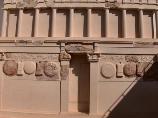Explore tunisia...
Where do you want to go ?
Airports
- Tunis Carthage Airport (TUN)
- Enfidha Airport (NBE)
- Monastir Airport (MIR)
- Djerba-Zarzis Airport (DJE)
- Tozeur-Nefta Airport (TOE)
World Heritage Sites
- Carthage (Kart-Hadasht)
- Dougga (Thugga)
- El Jem (Thysdrus)
- Ichkeul National Park
- Kerkouane
- Kairouan
- Sousse
- Tunis
Beach Resorts
Archaeological Sites
- Bulla Regia (Royal Bulla)
- Chemtou (Simitthus)
- Elles (Megalithic Tombs)
- Haidra (Ammaedara)
- Le Kef (Sicca Veneria)
- Makthar (Mactaris)
- Neapolis
- Oudhna (Uthina)
- Pupput
- Sbeitla (Sufetula)
- Thuburbo Majus
Nature and Traditions
War Graves & Battlefields

Chemtou (Simitthus)
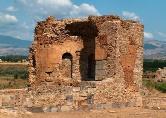
On a hillside 20 kilometres from Jendouba is the site of Chemtou, famous throughout the Roman Empire for its marble.
The Museum includes
- The Geology Room with rock samples and explanations of the geology of the area
- The Marble Room with explanations of the excavation work
- The Numidian Room with carvings and funerary pieces, some dating from 148 BC
-
The Roman Chemtou Room with samples of a hoard of
gold coins.
The Site itself includes:
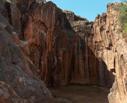
- Marble Quarries: ancient Simitthus is famous of its quarries of yellow and pink marble looking impressive with the smooth marble walls diving straight down.
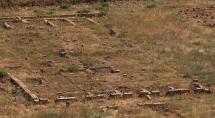
-
The Prison Camps: they are for up 20,000. These were the men working in the quarries.
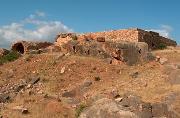
- A Hilltop Altar: the Roman temple was originally a Numidian altar made up from cut stones. Only few things telling about function: the staricase and the storage chambers.
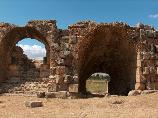
- A Theatre: most of its grandstand steps are destroyed over time, yet some of the ramps leading down to the underground sections are well- preserved.


